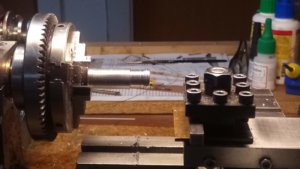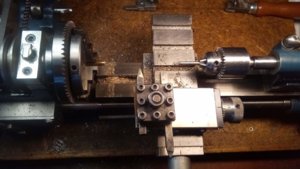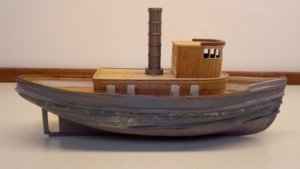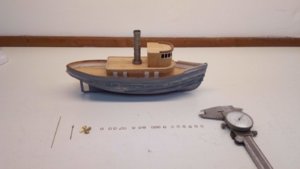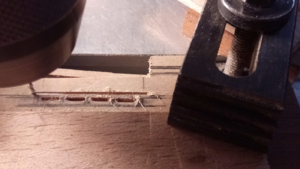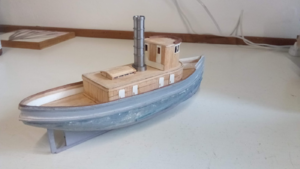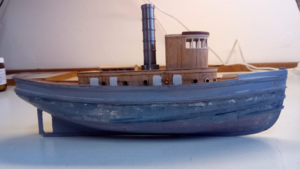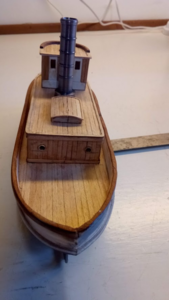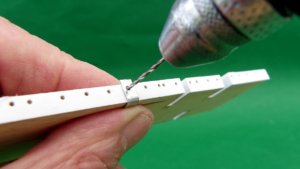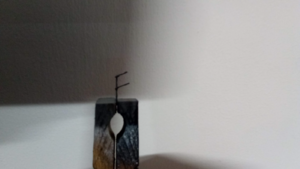- Joined
- Jul 19, 2019
- Messages
- 34
- Points
- 68

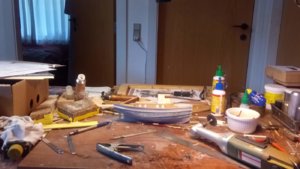
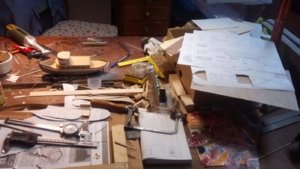
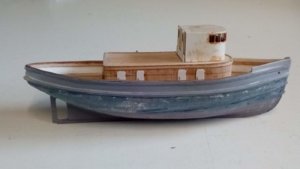
Some time ago I promised to send a couple of pictures of 'my work in process'. I found a plan of a generic American harbour tug which rather took my fancy. It was in 'Model Boats' last year and the plan itself could be reduced to a single A4; making it to a scale of about 1:100. (about 9" long). The hull is completed and rather fancifully 'plated' with small plates made from a sheet of computer paper. I really don't know whether this was the case in the first part of the 20th. century, but I wanted to try it out. The crew's quarters and deck house are in the process of being constructed and the brown paint is my painting of the deck house interior. The mess outside will be covered when I complete the cladding of of the exterior. I've been experimenting with acrylic water colours to get a more subdued effect than that acheived by Humbrol tinlet colours. On small models it can get rather garish I think. Now I have to clear my work bench so I can bring on my trusty Cowells lathe. There are 14 portholes to turn plus a funnel. I've used some plastic card as it's more bendable than wood and, when it's all painted, can not be seen. The pencil marks from door to door is the pencil line for the railings. Why is it I can't keep a clear and tidy bench? Sorry about the pictures, but I've had the devil of a job just to get these three on (plus 3 thumb nails pics.) Hope it will be better next time.
William (Denmark)
Edit by Admin Uwek: done
Last edited by a moderator: Wednesday at 9:04 AM
Reply



